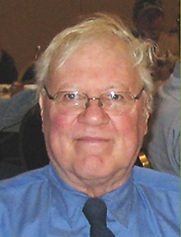Red and blue aren’t the only ubiquitous colors these days at the University of Arizona.
Gray also has become common as scores more UA professors choose to stay on the job past traditional retirement age.
Compared to a decade ago, students starting classes in Tucson this week are nearly three times as likely to see a senior citizen at the front of the lecture hall.
“The percentage of tenured faculty at UA who are 65 and older has almost tripled in the last decade, from 8 percent to 21 percent,” said a recent email to faculty leaders from Tom Miller, an associate provost.
“Almost one in 10 tenured faculty is now over 70,” Miller said — a 330 percent increase compared with 2003.
The graying of the professoriate isn’t unique to the UA.
Universities nationwide are seeing similar surges in so-called reluctant retirees, a situation that’s spawned soul-searching and research to figure out what’s driving the trend and how to best address it in a manner that doesn’t result in age discrimination.
The situation has pros and cons, experts say.
On the one hand, senior faculty are repositories of institutional memory and bring decades of experience to their work. But their presence in rising numbers can be costly in the long term, financially and otherwise.
Many are in their peak earning years. By staying on, they create a bottleneck in the professorial pipeline, blocking younger academics from being hired or advancing in their careers.
“Without open positions, you’re not hiring new blood,” said Wanda Howell, a distinguished professor in nutritional sciences and chair of the UA’s faculty.
“It prevents new faculty from bringing fresh ideas to campus.”
Absent wrongdoing or grave performance problems, tenured professors have jobs for life. In national polls, they cite various reasons for staying on when they could be collecting pensions and pursuing other passions.
Many say they took hits to their retirement accounts during the recession. Others cite longer and healthier lifespans, and see no reason to give up work they still find gratifying.
“Eighty is the new 60,” said Lynn Nadel, a UA regents professor of psychology and cognitive science, who turns 71 this year and outshines many younger colleagues.
Globally renowned in his field, Nadel will travel to Paris in the fall to collect an award for his research on Down syndrome, a genetic condition that impairs intellectual and physical development.
“For me, money is not the issue,” Nadel said of his decision to stay at UA. He said he could make more money by retiring from his $138,000 position and doing consulting work on the side.
“There’s just not a lot I could do in Tucson that would be more productive or fulfilling or interesting than what I’m doing now.”
Howell, the faculty chair, said many senior professors remain sharp and engaging. Yet some “just aren’t as productive as they once were,” and present a challenge to department heads.
Those tired of research work, for example, may be asked to spend more time on other tasks such as teaching or serving on committees, Howell said.
But some balk, she said. “They find it difficult to accept, and they resist having their job duties changed.”
A few years ago, the UA tried to lure more than 250 senior faculty into retirement by offering buyouts equal to a year’s salary. The response was underwhelming.
Only 50 — fewer than 20 percent — accepted the 2011 offer. No other financial incentives are planned at this time, said Allison Vaillancourt, the UA’s human resources boss.
The UA does have a phased retirement plan that allows professors to ease out with lighter workloads over a three-year period, she said.
Vaillancourt said the school doesn’t necessarily save money every time an elder professor leaves. In high demand fields such as science and technology, newcomers can command salaries much higher than those they’re replacing, she said.
David Hartshorne, 75, a UA professor of nutritional sciences who retired from his $115,000 position in May, said he knew it was time to bow out when his research funding started drying up. He found himself thinking, increasingly, that he’d had a good run and it was time to make room for someone else.
“It’s not easy for the younger people. That’s who I feel sorry for,” Hartshorne said.
“If we all stayed on until we drop dead at the bench, there would not be any new positions.”
UA students asked for comment on the rise of older faculty don’t seem bothered by the trend.
“I feel like if they’re older they know more so they actually teach a lot better,” said Annie Haguma, a sophomore studying public health.
Zachary Brooks, a UA doctoral candidate studying second-language aquisition and cognitive science, said senior professors have been some of his best teachers.
“What I see is passionate souls and incredible scholarship,” said Brooks, president of the UA’s graduate student body and its graduate and professional student council.
Yet, he also sees an industry that has little room for students like him, the next generation of would-be professors.
“I love the idea of passing knowledge on to others,” Brooks said.
“The question is, will I be able to get in the game?”







